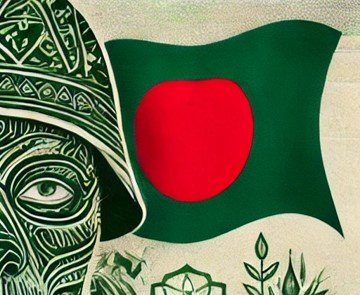Bangladesh Removes Sheikh Mujibur Rahman’s Image from Currency
In a move reflecting shifting political dynamics, Bangladesh has initiated the process of removing the image of Sheikh Mujibur Rahman, the country’s founding leader and the father of former Prime Minister Sheikh Hasina, from its currency notes. The decision comes months after Hasina fled to India following widespread protests that led to her resignation.
Changes in Bangladesh’s Currency Notes
The Bangladesh Bank has confirmed that new designs are being implemented for Taka 20, 100, 500, and 1,000 denominations. These notes, printed under the directive of the interim government led by Nobel laureate Muhammad Yunus, will exclude the image of Sheikh Mujibur Rahman.
Instead, the new notes will feature elements inspired by the July uprising, a student-led movement that catalyzed the political upheaval. The designs are said to include depictions of religious structures, Bengali cultural motifs, and graffiti symbolizing the protests.
According to Bangladesh Bank’s executive director, the redesigned currency notes are expected to enter circulation within the next six months. The initiative is being executed in phases, starting with the four major denominations, while plans are underway to redesign other notes gradually.
The Legacy of Sheikh Mujibur Rahman
Often revered as the “Father of the Nation,” Mujibur Rahman’s legacy has come under scrutiny in the wake of the political turmoil. Protests against a controversial job quota system expanded into a broader movement targeting symbols of his leadership. Statues and murals bearing his likeness were defaced during the demonstrations, amplifying tensions.
Sheikh Hasina, who now resides in India after being forced to flee on August 5, has criticized the interim government, accusing it of failing to protect minority communities, including Hindus. Her remarks have sparked controversy, with the International Crimes Tribunal labeling them as hate speech.
Political Symbolism in Currency Design
The decision to exclude Mujibur Rahman’s image from the national currency marks a significant shift in the country’s political narrative. Historically, the inclusion of his image on currency notes served as a tribute to his role in the nation’s independence.
The new designs, emphasizing the July uprising, reflect the interim government’s focus on acknowledging recent political and social events. The Finance Institute Division of the Ministry of Finance submitted the proposals for these changes in September, marking the first step toward reshaping the country’s monetary identity.
Controversy Surrounding the Interim Government
Since assuming power, the Yunus-led administration has faced both domestic and international criticism. Supporters of Sheikh Hasina view the currency redesign as part of a broader campaign to diminish her family’s legacy. The interim government, however, asserts that these changes represent a commitment to inclusivity and modernity.
As the redesigned currency notes prepare for release, the decision continues to stir debate, symbolizing the broader political and cultural shifts within Bangladesh.
See Also:
Cognition’s AI Coding Tool Devin Could Disrupt India’s Software Industry
Racist Tirade at LAX Targeting Indian-American Family
Cyber Monday sales projected to reach $13.2 billion
5 MBBS Students Killed in Kerala Road Accident, Car Collides With Bus
JD Vance Thanksgiving Family Photo With Indian Relatives Goes Viral
——————————————————————————-
It would mean the world to us if you follow us on Twitter, Instagram and Facebook. At Newscazt, we strive to bring you the latest news and stories from India, World, Business, Sports, Entertainment and more. Our team of experienced journalists and writers are committed to delivering accurate and unbiased news and analysis.




